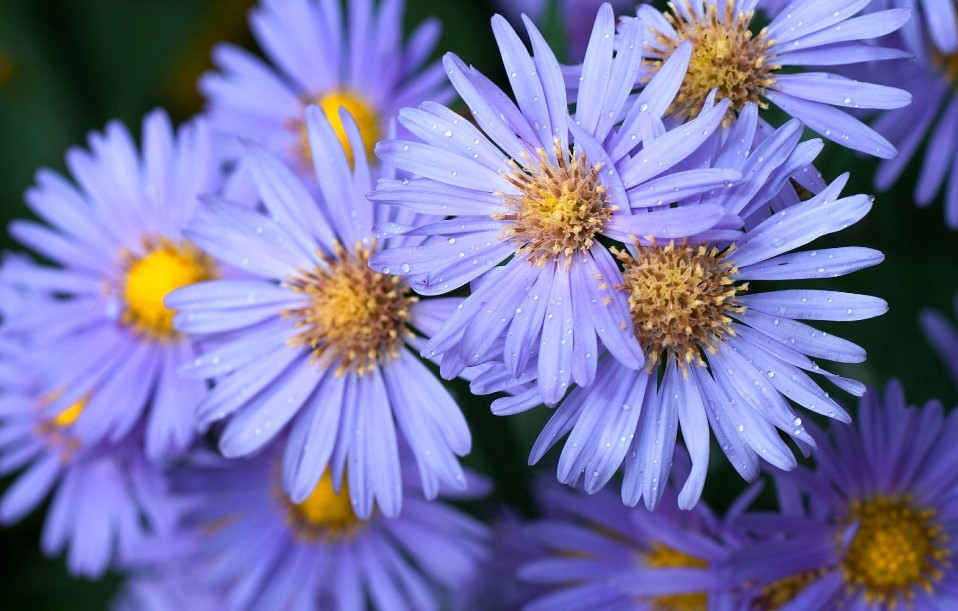
Aster Flower Care and Meaning
admin
- 0
If you’re interested in learning more about Aster flower care and meaning, you’ve come to the right place. Here, we’ll talk about the various types, colors, and care methods of this perennial flower. Read on to discover what this flower means to you! Here, we’ll also talk about how to choose the best Aster for your home or garden. And, of course, we’ll discuss what color Asters are, so that you can choose the best one for your space.
As the poets say, there are no blues in an aster’s smile. It is a flower that is native to the American continent and it’s one of the most commonly used varieties for decoration ornaments. Asters are famous for their stability, resilience, and durability. This makes them the ideal plant for any type of garden or house yard. Also, it is important to bear in mind that not all varieties of aster have the same symbolism. The color is what gives each flower its own connotation and meaning. If you’re looking for a particular one, we recommend using this guide to avoid confusion.

Aster flower care and meaning
Table of Contents
ToggleIf you’re looking for a hardy filler plant that is easy to grow, the aster is the answer. The hardy perennial adds a pop of colour to your early-season garden, and its late-season blooms can salvage a landscape. Learn more about how to care for and plant asters to enjoy the benefits of growing them. Aster flower care and meaning should be based on what you want your flowers to say about your love for it.
Asters thrive in well-drained soil that is slightly acidic. This soil is usually loamy and moderately acidic, and you can correct an overly alkaline soil by adding organic matter. It should also have full sunlight. Watering asters regularly will promote a strong bloom, but be careful not to overwater them. This could lead to mildew. Water asters once a week is usually enough.
Aster care
Aster flower care is relatively easy to perform. They thrive in a well-drained, moist soil. They can tolerate partial shade, but not a lot of it. For optimal flowering, choose a sunny location and make sure to keep the soil moist but not wet. Asters will not grow well in dry soil and do best in loamy soil. They also prefer moist, loamy soil.
After cutting the stems of asters, remove any foliage below the water line. Cut the stems about 2.5cm below the water line and hydrate in commercial floral preservative that contains sugar and a germicide agent. Add the preservative to the water and leave the aster flowers in the vase for about 7-14 days. Adding a small amount of plant food to the water after cutting will prolong the vase life of your blooms.
Aster flower meaning
Aster flower care and meaning: The meaning behind the plant is not as mysterious as you might imagine. This pretty perennial is a favorite of birds, especially chickadees and finches. To care for asters, it’s important to keep them in a cool, dry place. Aster flower care can be simple: cut back the flower stems to encourage bushier growth. Prune asters every year to encourage blooming, or divide plants every two or three years to produce more flowers.
The Aster flower’s name comes from the Ancient Greek word “aster,” which means “star.” Since asters are star-shaped, they’re often referred to as asters. As such, they’re often found in gardens. Care for asters is a simple matter of keeping them out of direct sunlight, but be sure to cut the flower’s stems below the water level. Once the stems are cut, rinse them thoroughly, as it’s important to prevent harmful bacteria from accumulating. Water the vase every two to three
days, and place it in a cool, well-ventilated location.
Aster colors
Aster flower care and meaning dates back to ancient Greece. The Greeks associated the aster flower with wisdom and protection from snakes. They also used asters for floriography, or coded communication. The purple aster represents wisdom, while the white aster symbolizes perfection and purity. Pink and red asters symbolize love and devotion. Read on to learn more about this flower. Aster flower care and meaning continues to evolve over time, but here are a few tips to get you started.
Asters are low maintenance plants that need little maintenance. Asters don’t need a lot of water and will bloom for seven to fourteen days in a vase. In addition to being low maintenance, asters look gorgeous in both outdoor and indoor settings. They’re also easily grown from cuttings or as a full bouquet in a vase. They make a beautiful garden focal point. But beware: they can be quite aggressive and will invade your neighbors’ yard unless you take extra care.

Where is the best place to plant an aster?
Asters grow in full sun or partial shade. However, asters will tolerate less sun in hotter climates. In cooler climates, they need full sun. In addition, asters grow best in well-drained soil. Mulch the area around the plants to retain moisture. Some native species of asters are tolerant of partial shade. However, you must make sure the soil is well-drained before you plant the aster.
The best time to plant an aster is anytime during the growing season. Plant them in spring or early fall. If you’re planting them in a flowerbed, make sure they’re planted in a row no closer than three feet apart. Asters grow best in average soil and benefit from compost and general- purpose fertilizer. Plant asters at least a year before frost to maintain their health.
If you are looking for a beautiful addition to your garden, as well as your home, or even a friend or loved one who enjoys gardening and has a green thumb, the aster plant is an excellent choice. As with any type of flower, it is important to choose the right variety for your climate and environment so that it can thrive. For the home gardener, this plant may be the best way to bring some color into your life in the fall.


